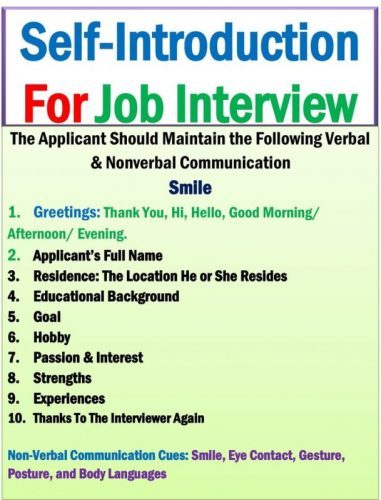This article provides Happy Eid ul Adha Mubarak Wishes, Greeting Images, Messages, and Quotes for celebrating Eid al Adha- 2026.
Eid ul Adha
Eid ul Adha is one of the major Islamic festivals following Eid ul Fitr for Muslim communities. Muslims around the world commemorate Eid ul Adha to admire the willingness of Ibrahim (AS), who sacrificed his son Ismail (AS), to follow Allah’s command. Muslims sacrifice animals to celebrate this day. Therefore, It is also known as Bakrid Eid and Eid Qurban based on geographic region. Usually, people from India and Pakistan term it Bakrid Eid.
However, Bangladeshi people call it Eid Qurban. The Muslim communities observe this (Eid ul Adha) festival by praying, sacrificing animals, visiting relatives’ houses, exchanging gifts and food, etc.
Eid al-Adha 2026 Celebration Date
The prospective date of the Eid al Adha 2026 celebration is on Wednesday, May 27, 2026, globally. So, Eid al-Adha 2026 will be celebrated by the Muslim community worldwide on May 26 and 27, 2026.
Dates of Eid Al Adha 2026, 2027, 2028, 2029, and 2030
| Eid Al Adha | Dates |
| Eid al Adha 2026 | Tuesday, May 26, 2026- Wednesday, May 27, 2026 |
| Eid al Adha 2027 | Sunday, May 16, 2027-Monday, May 17, 2027 |
| Eid al Adha 2028 | Thursday, May 4, 2028-Friday, May 5, 2028 |
| Eid al Adha 2029 | Monday, April 23, 2029- Tuesday, April 24, 2029 |
| Eid al Adha 2030 | Saturday, April 13, 2030- Sunday, April 14, 2030 |
Eid Mubarak Wishes 2026
Happy Eid Mubarak wishes are greeting messages that people exchange to wish for others’ well-being. Muslims exchange the “Eid Mubarak Wishes” message to celebrate the Eid ul Adha and Eid ul-Firt festivals. Eid Mubarak is an Arabic phrase Muslims use in the Eid al-Adha and Eid al-Fitr celebrations. It is a meaningful message that conveys blessing and greetings. Eid is the most prestigious festival for the Muslim community. The tradition for Eid al-Adha involves slaughtering an animal and sharing the meat in three equal parts – for family, for relatives and friends, and for poor people.
It is a standard greeting message that expresses a blessing festival. Usually, Muslim people greet to pray for blessing festivals. However, some Muslim communities use “Eid Mubarak” as a tradition to exchange greetings without the Eid festival.
Spread Your Eid Happiness With Others By Sharing Eid Mubarak Wishes.
The viewers can use Eid Mubarak greeting messages on their Social Media platforms, including IDC Captions For Instagram, Captions on Facebook, Tweets, etc. The author has collected and presented a few Best Happy Eid Mubarak Wishes 2026 Message samples and examples for audiences.

Wishes For Eid ul Adha
Eid ul Adha is One of The Biggest Religious Festivals After Eid-al-Fitr For Muslim Communities All Over The World. It Is Also Known as The Muslim’s Feast of Sacrifice. Eid al-Adha Is Set To Be Celebrated on The 10th of Dhu al-Hijjah in The Islamic Calendar. The Festival Normally Lasts For Three To Five Consecutive Days, Based on The Region.
During the Celebration, People Send Eid ul Adha Wishes To Their Loved Ones, Friends, Relatives, Families, and Followers. Sending Eid Mubarak Wishes has Become a Custom Now. It is Imperative To Exchange Eid Greetings When We Meet Each Other Physically. However, People Send Eid Mubarak Message Via Phone, Email, and Social Media Platforms To Strength Their Relationships. Here Are Some Eid ul Adha Wishes & Greetings Messages That You Can Copy and Send To Greet Eid Wishes.

Eid ul Adha Mubarak Wishes 2026
“May the divine blessings of Eid ul Adha fill your life with joy, prosperity, and happiness. Wishing you and your loved ones a blessed Eid Mubarak! May this auspicious occasion bring peace, harmony, and countless blessings to your home. Eid Mubarak!”
A special moment to strengthen faith and purity, and spread kindness to others. Taqabbalallahu minna wa minkum, Eid Mubarak!
Happy Eid Mubarak 2026 To You and All. May Allah S.W.T Grant Peace and Prosperity For Us and Our Family Members. Fid dunyah wal akhirah- Aameen. عيد مبارك، تَقَبَّلَ اللَّهُ مِنَّا وَمِنْكُمْ. Eid Mubarak, Taqabballahu Minna Wa Minkum.
I Am Expressing Eid Mubarak Wishes To All of My Friends, Family Members, Colleagues, and Well Wishers. May Allah Bless You and Your Family Members. I Wish You a Very Joyful Eid in 2026. May Allah Accept All Our Prayers and Forgive Our Mistakes.
May Allah Shower His Mercy On Us. Eid Mubarak! We Should Ask For Mercy Before Asking For Happiness and Prosperity.
Assalamalaikum Wa Rahmatullah. Eid Mubarak To You and All From Me & My Family. I Wish You Have The Best Eid.
Eid Mubarak! Sending you warm wishes for a joyful Eid filled with peace, love, and delicious food. May this Eid bring you and your loved ones closer together and create beautiful memories that last a lifetime.

Happy Eid Al Adha Mubarak-2026! Taqabbalallahu Minna Wa Minkum! May Allah Accept Our Good Deeds.
Eid Mubarak To All My Muslim Friends Who Are Celebrating! Wishing You a Joyous and Happy Eid.
May The Eid Bring Countless Joy and Love To Your Heart and Create all The Opportunities For Success. Happy Eid Mubarak!
Eid Mubarak, May Allah Keep Everyone Healthy and Happy.
Eid Mubarak, As Eid ul Adha Arrives With Its Message of Peace and Goodwill. So, Let It Rekindle Hope In Your Heart. I Wish Happiness For You and Your Family.
It Is A Great Sin Not To Get Food For Those In Need- Happy Eid Mubarak.
Eid Mubarak, May The Countless Blessing of The Almighty Allah
Blesses Your life With Love, Joy, Happiness, Prosperity, and Sound Mental and Physical Health.

Happy Eid Mubarak Wishes
EID Consists of Three Meaningful Letters That Convey a Significant Message For Everyone.
E Is Taken To Mean Embracing The Blessing of The Almighty Allah.
I Is Taken To Mean Inspire Others With Positive Attitudes.
D Is Taken To Mean Distribute The Happiness To All.
Happy Eid Mubarak Wishes To All.
Happy Eid Mubarak To My Beloved Family Members, Relatives, Friends, Neighbors, and Best Wishes.
Wishing a Happy Eid Mubarak To All. Praying Allah Will Bless You With Happiness and good Mental and Physical Health.
May this Eid be The best Eid for you and your family, with happiness, peace, and prosperity. Happy Eid, Mubarak To All.
May The Infinite Blessings of Allah Be With You Today and every day- Happy Eid ul Adha Mubarak.
Wishing a Very Happy Eid Mubarak To All. Praying, May Allah Grant Your Good Deeds and Forgive Your Wrongdoings. Be Blessed With Allah To Obtain a Happy, Healthy, and Peaceful Life.
Although I Am Staying Thousands of Miles Away From You, I Can Feel Touching and Hugging You- Happy Eid ul Adha Mubarak Darling.
Happy Eid-ul-Adha. Praying Eid will bring happiness and Peace To Our Lives.
We Are Hoping Not Only To Slaught The Animals To Celebrate Eid ul Adha But Also To Slaught Our Flaws and Sins To Gratify Our Allah- Happy Eid al Adha.
Expressing My Gratitude To The Almighty Allah For Allowing Me To Celebrate One More Eid Ul Adha in 2026. Wishing My Heartfelt Dua, Love, Respect, and Best Wishes To My Family Members, Friends, Relatives, Mentors, Mentees, and Good Wishers. Happy Eid al Adha Mubarak.
Happy Eid al Adha Mubarak To My Beloved Family Members, Friends, Relatives, Best Wishers, Haters, and All Muslims Around The World. Wishing Allah Will Bless Us By Washed Away Problems and Fulfilled Our Life Joyfully.
Eid ul Adha is Meant To Learn Sacrificing Our Arrogance, Anger, and Malevolence For The Happiness of The Almighty Allah- Happy Eid ul Azah Mubarak 2026.

Eid al-Adha Mubarak Wishes
During The Worldwide Health Pandemic, May Allah SWT Bless You and Your Family Members With Good Health. I Wishing You a Blessed Eid- al-Adha.
Assalamualikum and Eid al-Adha Mubarak To Everyone.
May Allah release the grief and fill our lives with a bundle of accomplishments on Eid. Have a Glorious Time.
The Physical Distance Can Not Reduce Our Love for Each Other- Stay Healthy Whenever You Are. Happy Eid al-Adha Mubarak 2026.
Accept My Virtual Wishes This Time. I Vehemently Believe That Distance Can Never Break Our Relationship. I Hope, We Will Celebrate Eid al-Adha 2026 Together- Happy Eid.
Accept My Happy Eid al Adha Mubarak Greeting and Receive My Sincere Prayers and Love. I Wish a Joyous Eid For Everyone.
I Wish a Very Happy Eid al Azah Mubarak To The Whole Muslim Community Around The World- Happy Eid-Ul-Azha.
Happy Eid al-Adha to all Muslims. Maaf Zahir Batin. May Allah Almighty Accept Our Sacrifice and Fill Our lives With his Blessings.
Eid al Adha Greetings 2026
Happy Eid Mubarak and Selamat Hari Raya(Malaysia) To All My Friends and Relatives Around The World. May this Eid Bring Blessings For the entire World and Accept Our Sacrifice.
The Cows, Camels, and Goats Are Brought For Sacrifice, Not For Show Off On Social Media. May Allah Accept Your Sacrifice- Eid ul Adha Mubarak.
Eid Means Happiness and Enjoyment; However, Eid al-Adha Implies Not Only Enjoyment But Also Guides Us To Be Worshiped in The Glory of Sacrifice. This Time May Eid Fade Away All Difficulties in Our Life and Be Filled With Happiness. Happy Eid ul Adha Mubarak To All.

Happy Eid al Adha 2026, Mubarak To Everyone. May Allah Protects Us From The Catastrophic Pandemic.
I Am Expressing My Happy Eid Mubarak Greeting For Everyone Who Stays Near and Far From Me. May Allah Bless You With Good Health and Wealth. Happy Eid al Adha 2026 Mubarak.
Eid al Azah Taught Us To Sacrifice Our Anger, Arrogance, and Agitation- Happy Eid Mubarak.
I wish Happy Eid al Adha Mubarak To All My Facebook Friends and Followers. Stay at Home and Stay Safe With Your Beloved Family Members.
EID AL ADHA Is A Blessing Event To Share Happiness With People From All Walks Of Life in Society. Eid Teaches Us To Be Generous and Charitable To All. Wishing My Heartfelt Dua, Love, and Respect To All of My Facebook Friends and Followers. I Pray Allah Will Protect Us From All Troubles.

Happy Eid al-Adha Mubarak Greetings 2026
Happy Eid al-Adha 2026. Eid Mubarak To All of My Family Members, Relatives, Friends, and Well Wishers. Expressing My Heartfelt Congratulations and Best Wishes To All. Be Blessed With The Almighty Allah, and Have a Very Enjoyable Eid.
This Eid al-Adha, Let Us Celebrate Indoors to Help Each Other and our loved ones Stay Safe. May This Day Bring Everyone Contentment and Blessings. Wishing Everyone Eid Mubarak!
Greetings and Best Wishes on Eid-ul-Adha to Everyone. May This Special Occasion bring Love, Peace, and Prosperity to you.
Eid Mubarak- Wishing to Celebrate This Eid-Ul-Adha With Maintaining all Kinds of Health Safety. Eid-Ul-Adha Greetings to all.

I Wish You a Blessed and Precious Happy Eid ul Adha Greetings For You and your Adorable Family Members.
Eid ul Adha Mubarak Wishes
Happiness Gets Double When You Share It. Eid Is a Great Festival To Share Your Happiness With People Around You. Eid ul Adha Mubarak To All.
Happy Eid Mubarak To All Who Love Me or Hate Me. May Allah Shower His Plentiful Blessings Upon You- Eid ul Adha Mubarak.
Eid-ul-Adha is About Slaughtering Animals To Please Allah. It Is All About Sacrificing For The Almighty Allah, The Creator of Everything.
Do Not Forget To Share The Legitimate Portion of The Animal Meat Among the Poor People Around You. Enjoy Eid Together and Share Happiness- Happy Eid ul Adha Mubarak 2026.
Eid Is Nothing More Than An Opportunity To Sacrifice Your Devotion To The Almighty Allah- Have A Very Happy Eid ul Adha.
Although We Are Passing Through Critical Moments Due To The Pandemic, Eid Al Adha Mubarak 2026.

Eid ul Adha Quotes From the Quran
According to Hadith, Prophet Mohammad (P.B.U.H) said:
“Allah has given you better than those feasts (festivals of non-believers): the ‘Eid-ul-Adha’ and ‘Eid-ul-Fitr.”[An-Nasai: 1556]
Our Holy Prophet Muhammad (P.B.U.H) has strictly forbidden fasting on Eid-ul-Adha and Eid-ul-Fitr. As it is mentioned in the following Hadiths:
“No fasting is permissible on the two days of Eid-ul-Fitr and Eid-ul-Adha.” [Sahih Bukhari: 1995]
“And whosoever fears God and keeps his duty to Him, He will make a way for him to get out (from every difficulty). And He will provide him from (sources) he never could imagine” [Sura At-Talaq: 65:2-3]
“Surely Ibrahim was an example, obedient to God, by nature upright, and he was not of the polytheists. He was grateful for our bounties. We chose him and guided him onto the right path. We gave him good in this world, and in the next, he will most surely be among the righteous.” [Sura Al Nahl 16; 120-121]
“Their meat will not reach Allah, nor will their blood, but what reaches Him is piety from you” [Sura Al-Hajj: 22:37].
Eid Mubarak Greetings From Celebrities and Organizations
We have presented a few Eid Mubarak Wishes examples for celebrities and organizations who can use them to greet others.
Celebrities and sports people might use the following Samples:
I wish a very “HAPPY EID UL ADHA MUBARAK” To All My Facebook Friends, Followers, Supporters, Mentors, Mentees, and well-wishers. Praying that Eid may bring countless Happiness and Joy To Your Life. Please Keep Me in Your Prayers.
Justin Trudeau, Canadian President, Eid Al Adha 2026, Wishes
Tonight, across the country and around the world, Muslims are coming together and observing Eid al-Adha. To everyone celebrating: Eid Mubarak- Justin Trudeau

Eid Mubarak Wishes From The Company
We have provided examples of Eid Mubarak greetings that organizations can follow to share Eid greetings on social media platforms, including Facebook, Instagram, WhatsApp, LinkedIn, and more. Additionally, we have collected some Eid greetings from the Facebook pages of various organizations for our viewers. The audience can follow these greetings to create and share their Eid ul Adha Mubarak messages.
The (Your Company Name) Extends The Most Sincere wishes and Greetings on the Eid al-Adha Occasion. May Almighty God give peace, Joy, and Prosperity to our Employees, Stakeholders, and Customers. Eid Mubarak 2026!
Eid Mubarak !!! Heartfelt Wishes & Greetings From (Your Company Name).
Eid Mubarak, Greetings From (Your Company Name) Team
Wishing you an Advanced Happy Eid-al-Adha and Bakra Eid Mubarak.
Eid Greetings Collected From the Organization’s Facebook Pages
Democratic Alliance’s Facebook page shares the following Eid greetings:
The DA wishes the Muslim community a blessed Eid al-Adha. Eid Mubarak to you and your loved ones. May this time bring you closer to those who matter most to you.
The NYPD (New York City Police Department) Facebook page shares the following message:
Eid Al-Adha Mubarak! Sending our best wishes to everyone in NYC, as well as those celebrating around the world, as we mark Eid-al-Adha. May it be filled with joy, blessing and peace.
The Realme Facebook Page Eid Status is as follows:
Eid al-Adha Mubarak! Wishing you and your loved ones a blessed celebration filled with joy, peace, and prosperity.
World Hijab Day Facebook Page:
Wishing everyone a blessed Eid al-Adha! May your sacrifices be rewarded and your prayers answered. Eid Mubarak!
HAPPY EID AL-ADHA 2025M/1446HUniversiti Malaya would like to extend its heartfelt wishes for a Happy Eid al-Adha 2025 M/1446H to everyone. This blessed day offers us a chance to reflect on the meaning of sacrifice and loyalty demonstrated by Prophet Ibrahim A.S. and his son, Prophet Ismail A.S.May the spirit of sacrifice inspire us to continue our efforts and service with full dedication in our respective fields. Eid al-Adha is also a time for us to strengthen our bonds and help those less fortunate.
Wishing all our Muslim colleagues, students, alumni and friends at NUS, in Singapore and overseas a most blessed Hari Raya Haji! May your lives be filled with peace, happiness and good health on this meaningful day of sacrifice. Do enjoy the time bonding with your family and loved ones.
Eid Mubarak Wishes Photo 2026
The Image of the Eid Mubarak wish has been uploaded for our visitors. You may download these photos to share them. The organization can attach its logo and name to its customers and stakeholders.

